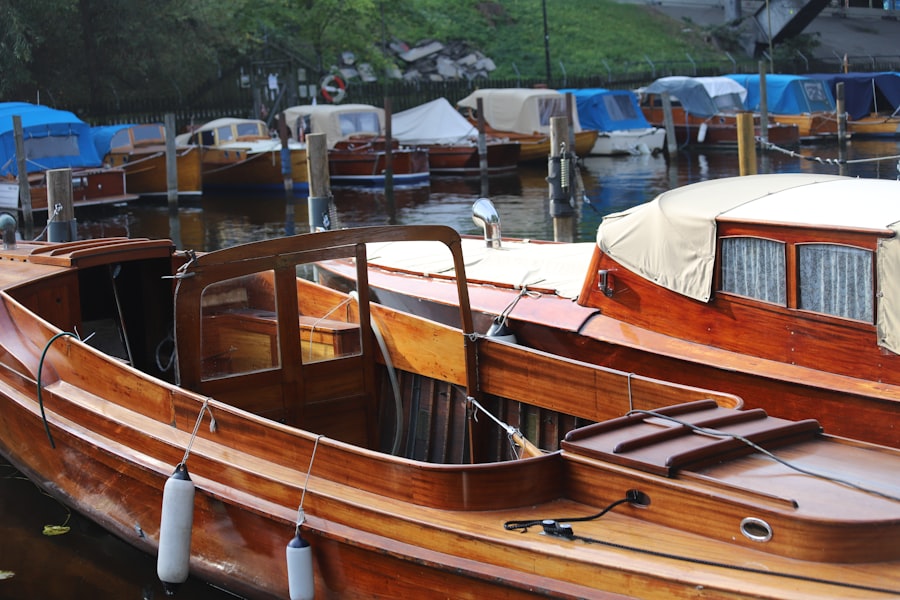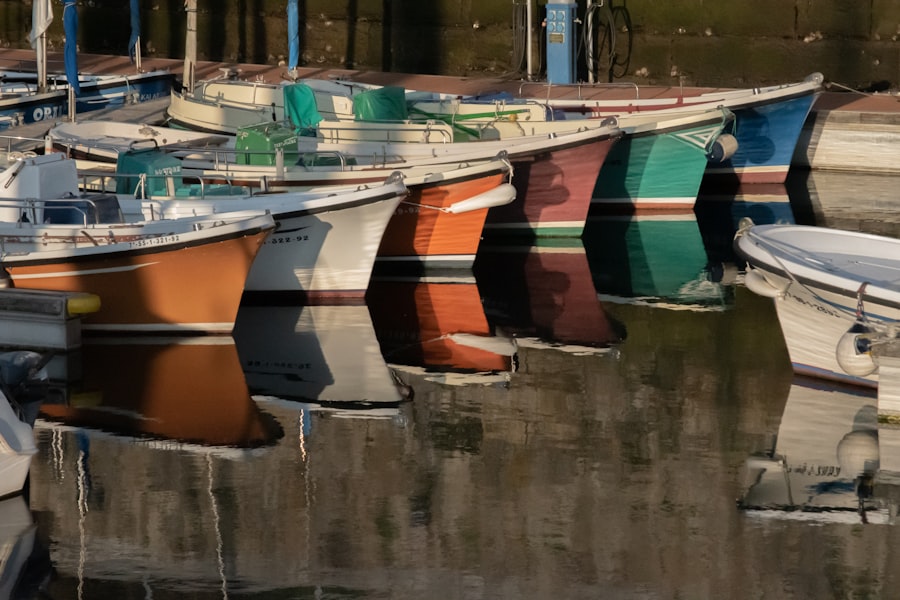Waterfront living has long captivated the imagination of individuals seeking a unique lifestyle that blends tranquility with adventure. The allure of waking up to the gentle lapping of water against the hull of a boat or the sight of a serene canal stretching out before one’s eyes is undeniably appealing. This lifestyle offers a connection to nature that is often hard to find in urban settings.
The sights and sounds of water create a soothing backdrop, fostering a sense of peace and relaxation that many find irresistible. Moreover, the opportunity to engage with the natural world—whether through fishing, kayaking, or simply enjoying the view—adds an enriching dimension to daily life. In addition to the aesthetic and sensory pleasures, waterfront living often fosters a strong sense of community.
Many canal boat dwellers find themselves part of a close-knit group of like-minded individuals who share a passion for life on the water. This camaraderie can lead to lasting friendships and a supportive network that enhances the overall experience of living on a canal boat. The unique lifestyle encourages social interactions, whether through organized events, casual gatherings, or simply exchanging pleasantries with neighbors as they pass by.
The combination of natural beauty and community spirit makes waterfront living an attractive option for those seeking a more fulfilling way of life.
Key Takeaways
- Waterfront living offers unique scenic beauty and a peaceful environment.
- Canal boats provide mobility, a close connection to nature, and a cozy living space.
- Various types of canal boats are available, from traditional narrowboats to modern cruisers.
- Important buying considerations include boat size, condition, mooring options, and budget.
- Maintaining a canal boat requires regular upkeep, including engine care and hull maintenance.
Benefits of Living on a Canal Boat
Living on a canal boat offers numerous benefits that extend beyond the picturesque views and tranquil surroundings. One significant advantage is the flexibility and mobility that comes with this lifestyle. Unlike traditional homes, canal boats allow residents to explore various locations without the need for extensive travel.
This mobility means that one can experience different communities, landscapes, and cultures simply by navigating the waterways. For those with a sense of adventure, this aspect of canal living can be incredibly liberating, providing opportunities for spontaneous trips and new experiences. Another compelling benefit is the potential for a simpler, more sustainable lifestyle.
Many canal boat dwellers embrace minimalism, as living in a confined space encourages thoughtful consumption and decluttering. This lifestyle often leads to reduced environmental impact, as residents tend to rely on renewable energy sources, such as solar panels, and practice water conservation techniques. Additionally, the close proximity to nature fosters an appreciation for the environment, prompting many to adopt eco-friendly practices.
The combination of mobility, simplicity, and sustainability makes living on a canal boat an appealing choice for those looking to align their lifestyle with their values.
Types of Canal Boats Available for Sale

The market for canal boats is diverse, offering various types to suit different preferences and needs. Narrowboats are perhaps the most iconic type of canal boat, characterized by their long and slender design, which allows them to navigate the narrowest waterways in the UK. These boats typically range from 30 to 70 feet in length and can be customized with various layouts and amenities, making them suitable for both short trips and full-time living.
Many narrowboats come equipped with modern conveniences such as kitchens, bathrooms, and comfortable sleeping quarters, allowing residents to enjoy a cozy home on the water. Another popular option is the widebeam boat, which is broader than a traditional narrowboat and offers more interior space. These boats are ideal for those who prioritize comfort and livability over navigating tight waterways.
Widebeams typically range from 10 to 14 feet in width and can accommodate larger families or groups. They often feature spacious living areas, larger kitchens, and more extensive storage options. Additionally, some widebeam boats are designed for year-round living, equipped with central heating systems and insulation to ensure comfort during colder months.
For those seeking a more traditional experience, historic working boats are also available on the market. These vessels have been restored to preserve their original charm while incorporating modern amenities. Owning a historic working boat can provide a unique connection to the rich history of canal transport and trade in the UK.
Each type of canal boat offers distinct advantages, allowing prospective buyers to choose one that aligns with their lifestyle preferences and intended use.
Factors to Consider When Buying a Canal Boat
| Factor | Description | Importance Level | Typical Range/Value |
|---|---|---|---|
| Boat Length | Length of the canal boat, affects maneuverability and mooring options | High | 30 to 70 feet |
| Beam (Width) | Width of the boat, important for canal width compatibility | Medium | 6 to 12 feet |
| Engine Type | Type of engine (diesel, electric, hybrid), impacts fuel efficiency and maintenance | High | Diesel most common |
| Fuel Capacity | Amount of fuel the boat can hold, affects range between refueling | Medium | 50 to 200 liters |
| Accommodation | Number of berths and living space available | High | 2 to 6 berths |
| Hull Material | Material of the hull, affects durability and maintenance | Medium | Steel, Aluminum, or Fiberglass |
| Draft | Depth of the boat below waterline, important for shallow canals | High | 1 to 3 feet |
| Price Range | Cost of purchasing the canal boat | High | Varies widely based on size and condition |
| Maintenance Costs | Estimated annual maintenance and repair expenses | Medium | Varies, typically 5-10% of purchase price annually |
| Navigation Equipment | Availability of GPS, radar, and other navigation aids | Medium | Basic to advanced systems |
When considering the purchase of a canal boat, several factors warrant careful evaluation to ensure that the investment aligns with one’s lifestyle and needs. First and foremost is the intended use of the boat—whether it will serve as a primary residence, a weekend getaway, or a rental property. This decision will significantly influence the size, layout, and features required in the boat.
For instance, those planning to live aboard full-time may prioritize spacious interiors and ample storage solutions, while occasional users might opt for smaller vessels that are easier to maneuver. Another critical factor is budgetary considerations. The cost of purchasing a canal boat can vary widely based on its size, age, condition, and included amenities.
Prospective buyers should also factor in ongoing expenses such as mooring fees, maintenance costs, insurance premiums, and fuel expenses when determining their budget. It’s essential to conduct thorough research on these costs to avoid any financial surprises down the line. Additionally, potential buyers should consider whether they want a new build or a second-hand vessel; each option comes with its own set of advantages and challenges.
Costs Associated with Canal Boat Ownership
Owning a canal boat involves various costs that extend beyond the initial purchase price. One of the most significant ongoing expenses is mooring fees, which can vary depending on location and facilities provided at the mooring site. Some marinas offer amenities such as electricity hookups, water supply, and waste disposal services, which may come at an additional cost.
In urban areas or popular tourist destinations, mooring fees can be particularly high, so it’s essential for prospective owners to research their options thoroughly. Maintenance costs are another crucial consideration for canal boat owners. Regular upkeep is necessary to ensure the vessel remains in good condition and operates safely.
This includes routine tasks such as cleaning the hull, checking for leaks or damage, servicing engines or heating systems, and maintaining electrical systems. Depending on the age and condition of the boat, these maintenance tasks can add up over time. Additionally, owners should budget for unexpected repairs or replacements that may arise due to wear and tear or environmental factors.
Insurance is another essential cost associated with canal boat ownership. While rates can vary based on factors such as the boat’s value and intended use (e.g., residential vs. leisure), it’s crucial for owners to secure adequate coverage to protect their investment.
Some marinas may also require proof of insurance before allowing mooring privileges.
Popular Canal Boat Communities

Several communities across the UK have become well-known for their vibrant canal boat cultures. One such area is Bath, where picturesque canals weave through stunning Georgian architecture. The city’s rich history combined with its scenic waterways attracts many canal boat enthusiasts who appreciate both culture and nature.
Bath offers various mooring options along its canals, providing residents with easy access to local amenities while enjoying the tranquility of life on the water. Another popular destination is London’s Regent’s Canal, which runs through some of the city’s most vibrant neighborhoods. The canal is lined with parks, cafes, and cultural attractions that make it an appealing location for both liveaboards and leisure boaters alike.
The diverse community along Regent’s Canal fosters a lively atmosphere where residents often engage in social activities such as community events or informal gatherings on their boats. In addition to these urban settings, rural communities along canals also offer unique experiences for boat dwellers. The Llangollen Canal in Wales is renowned for its stunning scenery and peaceful surroundings.
This area attracts those seeking a quieter lifestyle while still enjoying access to charming villages and beautiful landscapes.
Tips for Maintaining a Canal Boat
Proper maintenance is essential for ensuring that a canal boat remains safe and enjoyable over time. One key aspect of maintenance involves regular inspections of both the interior and exterior components of the vessel. Owners should routinely check for signs of wear or damage—such as leaks in plumbing systems or corrosion on metal surfaces—and address any issues promptly to prevent further deterioration.
Cleaning is another vital part of maintenance that should not be overlooked. Regularly cleaning both the interior living spaces and exterior surfaces helps preserve the boat’s condition while enhancing its aesthetic appeal. Owners should pay special attention to areas prone to mold or mildew growth due to moisture exposure.
Additionally, it’s important for canal boat owners to familiarize themselves with basic mechanical systems onboard—such as engines or heating systems—to troubleshoot minor issues before they escalate into major problems requiring professional assistance. Keeping an organized logbook detailing maintenance tasks performed can also help track when specific services are due.
Exploring the Canal Lifestyle
The canal lifestyle offers an array of experiences that extend beyond simply living on water; it encompasses a unique way of engaging with one’s surroundings while fostering connections within communities along waterways. Many canal boat dwellers find joy in exploring nearby towns or villages via their boats—stopping at local markets or festivals along their journeys adds richness to everyday life. Moreover, engaging in recreational activities such as fishing or kayaking provides opportunities for relaxation while connecting with nature firsthand.
Many residents also participate in organized events within their communities—such as communal barbecues or holiday celebrations—which foster camaraderie among neighbors. The canal lifestyle encourages individuals to slow down and appreciate life’s simple pleasures—whether it’s watching sunsets over tranquil waters or sharing stories around a campfire with fellow boaters under starlit skies. This immersive experience creates lasting memories that resonate deeply within those who choose this path—a testament to why so many are drawn toward life on the water.


